
Rosa Louise McCauley Parks was an American activist in the civil rights movement best known for her pivotal role in the Montgomery bus boycott. The United States Congress has honored her as "the first lady of civil rights" and "the mother of the freedom movement".

Carter Godwin Woodson was an American historian, author, journalist, and the founder of the Association for the Study of African American Life and History (ASALH). He was one of the first scholars to study the history of the African diaspora, including African-American history. A founder of The Journal of Negro History in 1916, Woodson has been called the "father of black history". In February 1926 he launched the celebration of "Negro History Week", the precursor of Black History Month. Woodson was an important figure to the movement of Afrocentrism, due to his perspective of placing people of African descent at the center of the study of history and the human experience.

Benjamin Lawson Hooks was an American civil rights leader and government official. A Baptist minister and practicing attorney, he served as executive director of the National Association for the Advancement of Colored People (NAACP) from 1977 to 1992.
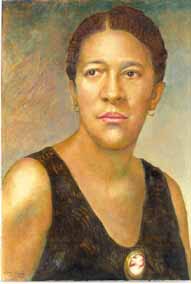
Modjeska Monteith Simkins was an important leader of African-American public health reform, social reform and the Civil Rights Movement in South Carolina.
The civil rights movement (1896–1954) was a long, primarily nonviolent action to bring full civil rights and equality under the law to all Americans. The era has had a lasting impact on American society – in its tactics, the increased social and legal acceptance of civil rights, and in its exposure of the prevalence and cost of racism.
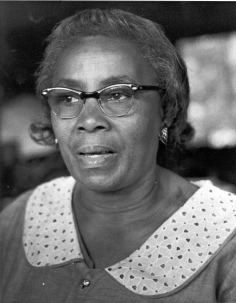
Septima Poinsette Clark was an African American educator and civil rights activist. Clark developed the literacy and citizenship workshops that played an important role in the drive for voting rights and civil rights for African Americans in the Civil Rights Movement. Septima Clark's work was commonly under-appreciated by Southern male activists. She became known as the "Queen mother" or "Grandmother" of the Civil Rights Movement in the United States. Martin Luther King Jr. commonly referred to Clark as "The Mother of the Movement". Clark's argument for her position in the Civil Rights Movement was one that claimed "knowledge could empower marginalized groups in ways that formal legal equality couldn't."

Myrlie Louise Evers-Williams is an American civil rights activist and journalist who worked for over three decades to seek justice for the 1963 murder of her husband Medgar Evers, another civil rights activist. She also served as chairwoman of the NAACP, and published several books on topics related to civil rights and her husband’s legacy. On January 21, 2013, she delivered the invocation at the second inauguration of Barack Obama.

Enolia Pettigen McMillan was an American educator, civil rights activist, and community leader and the first female national president of the NAACP.
Raylawni Branch is a black Mississippi pioneer of the Civil Rights Movement, a professional nursing educator and US Air Force Reserve officer. She is best known for her leading role in the integration of the University of Southern Mississippi (Hattiesburg) in 1965, which was peaceful as opposed to the violent riot triggered by white racism after the enrollment of James Meredith at the University of Mississippi (Oxford) in 1962.
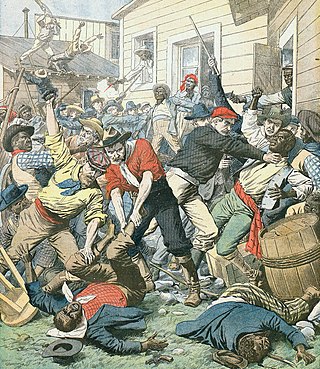
Ell Persons was a black man who was lynched on 22 May 1917, after he was accused of having raped and decapitated a 15-year-old white girl, Antoinette Rappel, in Memphis, Tennessee, United States. He was arrested and was awaiting trial when he was captured by a lynch party, who burned him alive and scattered his remains around town, throwing his head at a group of African Americans. A large crowd attended his lynching, which had the atmosphere of a carnival. No one was charged as a result of the lynching, which was described as one of the most vicious in American history, but it did play a part in the foundation of the Memphis chapter of the NAACP.
Julia Britton Hooks, known as the "Angel of Beale Street," was a musician and educator whose work with youth, the elderly, and the indigent was highly respected in her family's home state of Kentucky and in Memphis, Tennessee, where she lived with her second husband, Charles F. Hooks. She was a charter member of the Memphis branch of the National Association for the Advancement of Colored People (NAACP), and her example served as an inspiration for her grandson, Benjamin Hooks, executive director of the NAACP from 1977 to 1992. Julia was also a leader for African-American women and active in the civil rights movement.
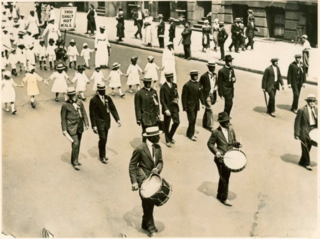
The anti-lynching movement was an organized political movement in the United States that aimed to eradicate the practice of lynching. Lynching was used as a tool to repress African Americans. The anti-lynching movement reached its height between the 1890s and 1930s. The first recorded lynching in the United States was in 1835 in St. Louis, when an accused killer of a deputy sheriff was captured while being taken to jail. The black man named Macintosh was chained to a tree and burned to death. The movement was composed mainly of African Americans who tried to persuade politicians to put an end to the practice, but after the failure of this strategy, they pushed for anti-lynching legislation. African-American women helped in the formation of the movement, and a large part of the movement was composed of women's organizations.

Ruby Hurley was an American civil rights activist. She was a leader in the Civil Rights Movement and administrator for the NAACP, and was known as the "queen of civil rights".

Ancella Radford Bickley is an American historian born in Huntington, West Virginia on July 4, 1930. She earned a bachelor's degree in English from West Virginia State College, now West Virginia State University in 1950, a master's degree in English from Marshall University in 1954, and an Ed.D. in English from West Virginia University in 1974. She is involved in the preservation of African American history in West Virginia.
Maxine (Atkins) Smith born in Memphis, Tennessee, United States, was an academic, civil rights activist, and school board official.
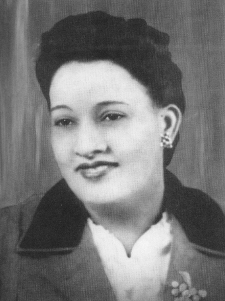
Lulu Belle Madison White was a teacher and civil rights activist in Texas during the 1940s and 1950s. In 1939, White was named as the president of the Houston chapter of the National Association for the Advancement of Colored People (NAACP) before becoming executive secretary of the branch in 1943. Under her leadership, the Houston chapter of the NAACP more than doubled in size from 1943 to 1948.
The Memphis Tennessee Garrison House is a historic house at 1701 10th Avenue in Huntington, West Virginia. Built about 1920, this modest two-story frame house was the home of Memphis Tennessee Garrison (1890-1988), a leading figure in the advance of African-American civil rights in Huntington, for the last forty years of her life. Garrison was a teacher, political organizer, and influential leader of the local branch of the NAACP. She was the first female of the West Virginia State Teachers Association, and vice-president of the American Teachers Association, an association of teachers working in segregated schools.
Esther Georgia Irving Cooper was a civil rights leader in Arlington, Virginia.
Blanche Louise Preston McSmith was an African-American civil rights activist, businesswoman and politician.
Tami Sawyer is an American politician and civil rights activist. She was elected in August 2018 as Shelby County Commissioner for District 7 and resides in Memphis, Tennessee. She is a member of the Democratic Party. She serves as chair of the Education and Legislative committees. She is chair of the Shelby County Commission Black Caucus.












